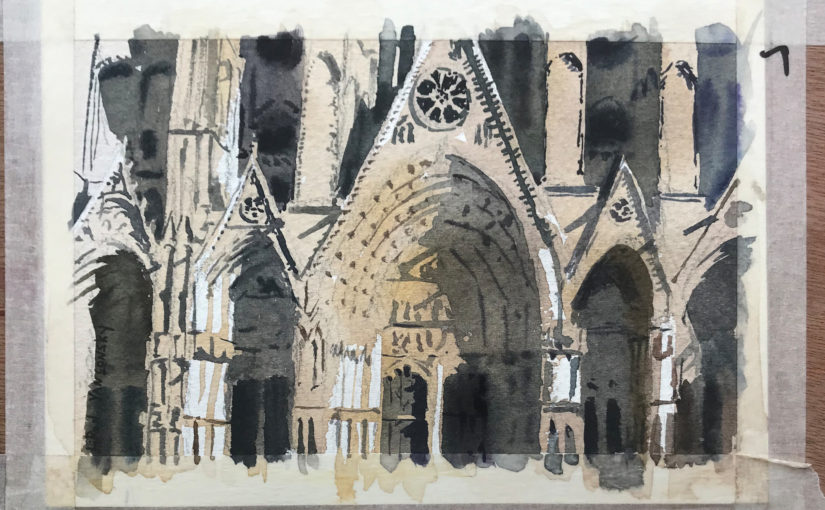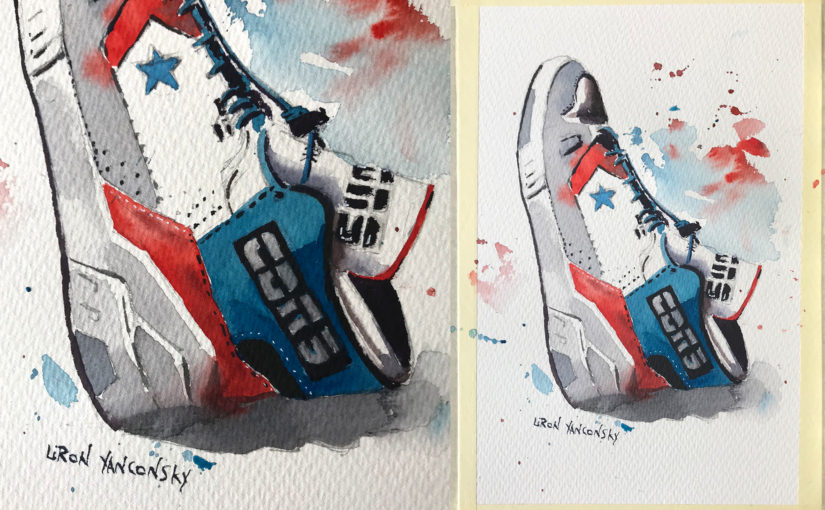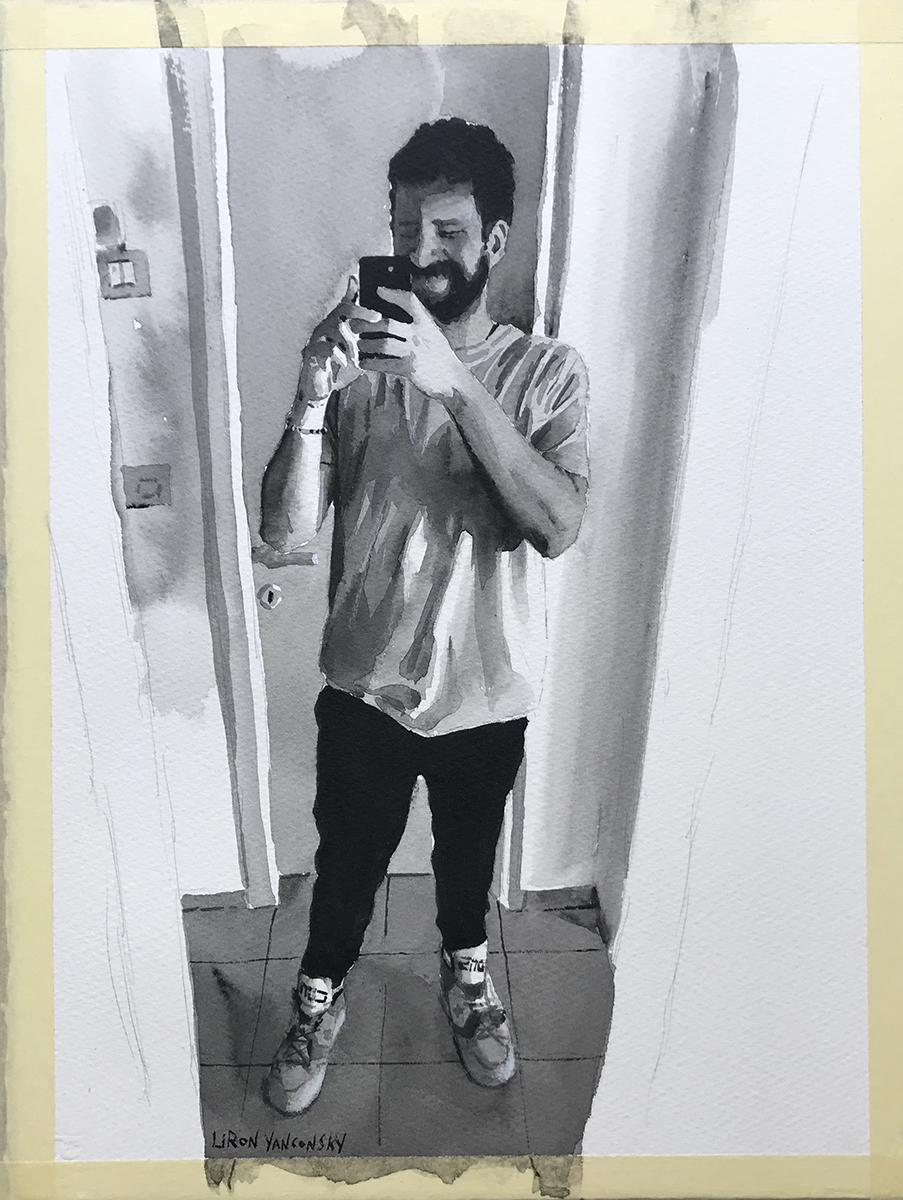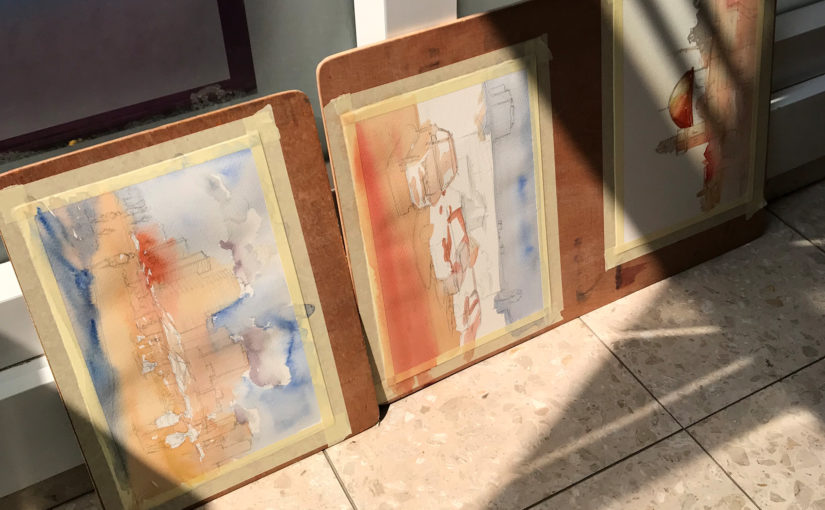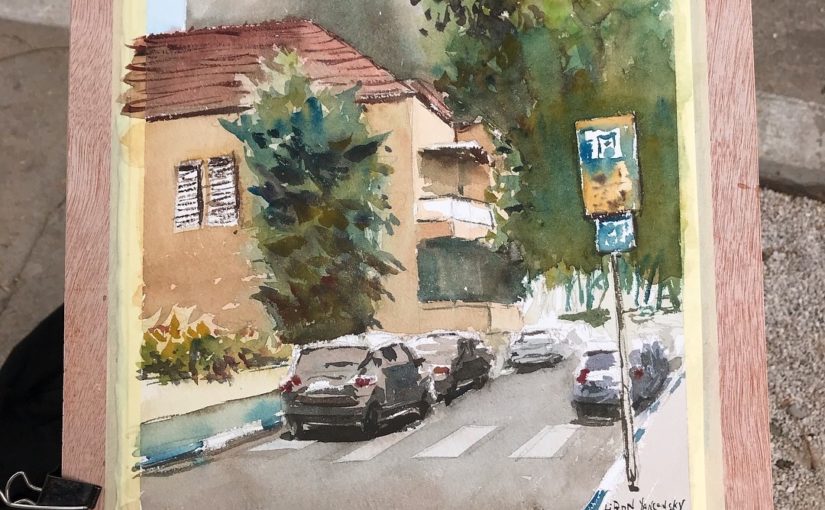Podcast: Play in new window | Download
Hi there! In this episode of the podcast I talk about a watercolor breakthrough I anticipated I’ll be going through soon.
Watercolor Rough Patch
I’ve had a challenging 2 months or so when it comes to painting. I didn’t feel like my work is connecting the way I’m used to, and the results were hit or miss. Got some great ones, but also some subpar ones.
This isn’t necessarily bad. It usually means you’re going through growth and raising your standards.
Sergey Temerev & Looking at Shapes
I gained an interesting insight while, by pure chance, stumbling upon a video of Sergey Temerev painting a spectacular cloudy skies scene (his speciality, it seems).
Here’s an example of a similar one by Sergey Temerev (you should really look into his work – it’s SO GOOD!!).

And here’s the specific process video I watched:
While watching it I felt like there’s something I want to try when it comes to the painting process. And that thing is looking at shapes a little differently, and dividing the subjects into shapes a little differently from what I’m used to.
The result was this small painting of the Bourges Cathedral in France.


I’m highly pleased with it.
I think it will be a bit hard to explain the exact mental shift I went through, so I do plan on addressing it in a future YouTube video.
But it does seem to be connected to wet-in-wet, and making the most out of every part of every wash.
I hope that makes sense, and that you enjoyed listening / reading.
And with that, I’ll wish you lots of good health in these challenging CoronaVirus times. Stay safe and healthy!
And I’ll talk to you again soon,
— Liron
Here’s where you can reach out to me (:
TikTok – @Liron.Yan
YouTube – Liron Yanconsky Art
LinkedIn – Liron Yanconsky
Pinterest – Liron Yanconsky
Instagram – @LironYanIL
Twitter – @LironYan

